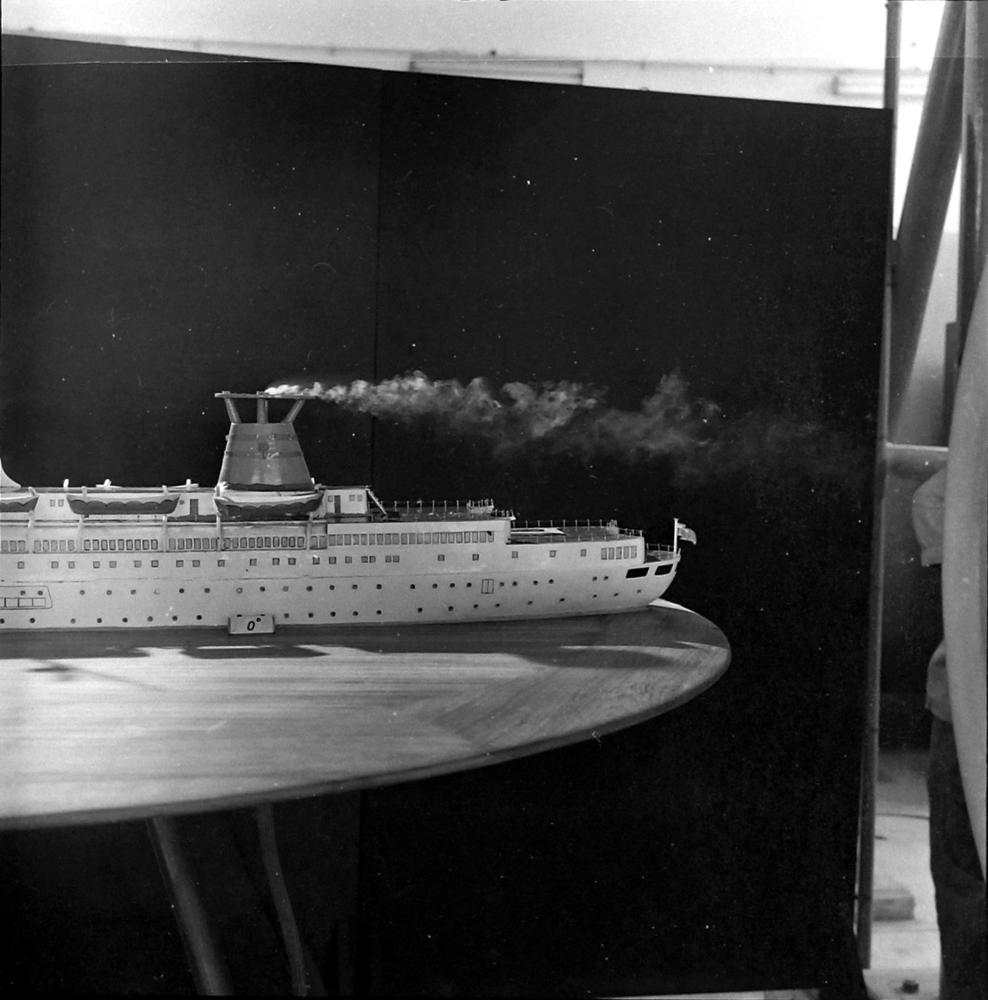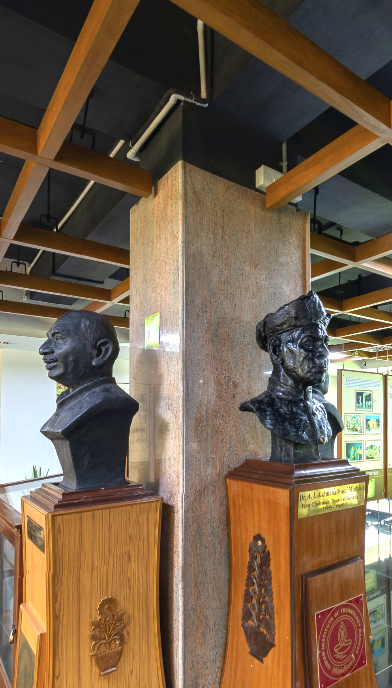
Smoke nuisance test on model of SS State of Bombay
Academic Facilities , Departments
In the 1960s, the Applied Mechanics Department of IIT Madras had a wind tunnel among its facilities. German technicians came to the Institute to assemble the tunnel which became functional in the late 1960s. It was used for industry work (smoke nuisance) and laboratory work for a few years. The wind tunnel was eventually dismantled some decades after it was put up.
SS State of Bombay was one of the ships operated by the British India Steam Navigation Company, also known as the BI Line. The ship plied the India to East Africa sea lanes along with other ships such as the Karanja, Amra, Kampala, Muzzaffari and the Aronda, between the 1930s and 1960s. The ship was built by Mazagon Dock Ltd.
The model of the SS State of Bombay was tested in the 1.5 m dia test-section of the closed-circuit, low-speed wind tunnel (not seen in photograph), in the Department of Applied Mechanics, IIT Madras. In the album titled ‘Achievements and Aspirations’ published by IIT Madras in January 1976, it is mentioned that the “tunnel is capable of a maximum speed of 60 m/s and is provided with a semi-automatic six-component balance.”
The smoke nuisance test was conducted on models of ships in order to find ways to prevent exhaust smoke which was discharged through the funnel, from coming back down onto the ship which could cause inconveniences to passengers. An article notes that the “classical high, narrow smokestacks” did not cause any smoke trouble, while the modern “short, bulky, streamlined funnels” caused smoke nuisance on ships.
- Contribute
to the Centre -
Monetary
Support - Digital
Material











